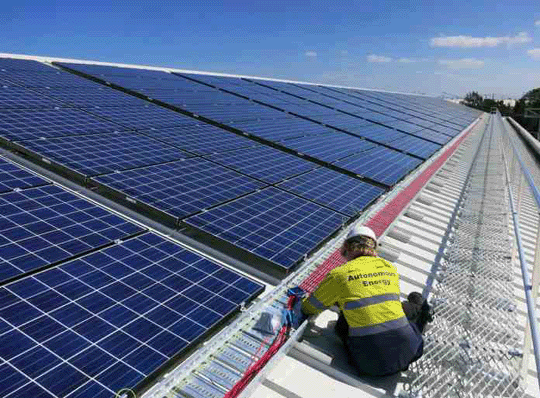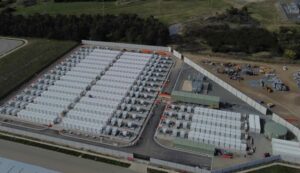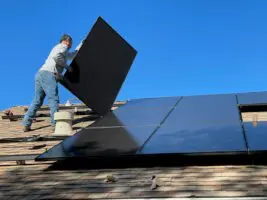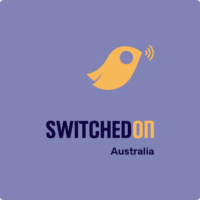Three of Victoria’s electricity distributors will be able to pass on the $26.3 million cost of technology needed to turn off rooftop solar systems in emergencies – a move that has incurred the wrath of some in the solar industry.
The impact of the cost pass through will be just $6-10 a year per household — solar owner or not — as well as an estimated loss of $4-7 a year to people who own rooftop systems from not being able to export electricity.
But it is the principal that counts. The combination of distributed network service providers (DNSPs) being allowed to switch off rooftop solar systems and then charging consumers for that is unfair, says Nexa Advisory CEO Stephanie Bashir.
“The introduction of the emergency backstop will cost consumers who have invested in good faith – this way they get to pay three times: for the solar panels and batteries, then for electricity when those are shut down remotely by the power company, and then in high bills because they are now also being asked to pay to set up the mechanism to switch their solar off,” she told Renew Economy.
“If we want to bring people on the journey, social licence starts at home and actions and policies to penalise people are not helping.”
The Victorian Emergency Backstop Mechanism (VEBM) was introduced after the Australian Electricity Market Operator (AEMO) demanded that all DNSPs in Australia set up a solar switch-off capability to remotely curtail or turn off rooftop systems when demand bottoms out.
Last week, the Australian Energy Regulator (AER) agreed that Jemena, Powercor and United Energy could defray the cost of complying with it by raising revenue from their customers.
Jemena will be able to pass on $8.3 million in costs to Victorians after asking for $8.6 million; Powercor will be allowed to raise $11.5 million after asking for $11.6 million; and for United Energy customers the fee is $6.5 million – its requested figure.
These will be charged in the 2025-26 financial year and cover digital upgrades and setting up new documentation, training and business processes.
The fact that regulated DNSP monopolies are allowed to pass on the cost of upgrading IT systems and setting up new business processes is not fair, given they’re just replicating each other’s work, says Catch Power head of sales Nigel Morris
“How is it that we have ended up with a system that allows three DNSPs to replicate the same effort, be three months late delivering it, and then slug every single homeowner $6-$10 per year to recover these costs, for a functionality that may occur “a few times a year at worst”?” he said in a LinkedIn post.
“Solar equipment manufacturers and homeowners by contrast, have no regulated way of recouping their investments.”
AEMO’s panic button
The AEMO-required changes have come about in the face of industry opposition, with critics calling the move regulatory overreach and a “blunt instrument” that would ultimately cost consumers.
In Victoria, Bashir says the cost to consumers will be just under $70 million. She says consumers should be allowed to see the reasoning why they’re incurring this extra tariff, but there has been no publicly released cost-benefit assessment of the VEBM.
And yet the market regulator persevered saying it needed the mechanism to control “more than seven Eraring power stations worth of power”.
In an IEEFA briefing note published in 2021, Gabrielle Kuiper and Steve Blume argued that market bodies and governments should focus on accelerating the deployment of smart, dynamic technologies to modernise the grid rather than imposing crude cut-off mechanisms that reach in behind the meter and take control from households.
The VEBM requires that rooftop solar and systems smaller than 200 kilowatts (kW) installed or upgraded after 1 October this year must come with an internet-connected inverter able to support Common Smart Inverter Profile Australia (CSIP-AUS).
The Victorian government is vague on what an emergency might look like, saying the emergency backstop “will only be used when required by AEMO… in rare emergencies when solar exports are too high to be safely managed.”
The Victorian networks are figuring out their own ways of managing the surfeit of solar energy.
AusNet is pondering a “sun tax”, albeit wrapped in language assuring customers it will be opt-in only unless they own an electric vehicle with a smart charger.
Powercor is choosing instead to lean on tariffs rewarding rooftop solar exports at peak periods and investing in big batteries and flexible exports.
And it now turns out that it may not be needed, as AEMO is introducing protocols that would require big batteries to discharge and stand by empty, in case they are needed to charge up if operational grid demand falls too low. This would remove the need for a likely unpopular switch off of rooftop solar.











Leave a Reply